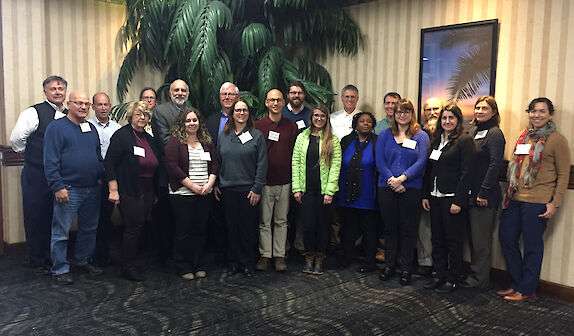Developing a Report Card for Western Lake Erie
The Western Lake Erie Report Card provides a transparent, timely, and geographically detailed assessment of Western Lake Erie basin and watershed health using data from 2018, defined as the progress of indicators toward scientifically-derived thresholds or goals.
Environmental report cards are used by resource managers to assess and report on the ecosystem health of a region. Developing rigorous, quantitative assessments provides accountability to support environmental protection efforts. A five-step process of developing report cards is used to assess progress: 1) determine values and threats, 2) choose indicators, 3) define thresholds, 4) calculate scores, and 5) communicate results.


The report card was co-developed with stakeholders from around the Western Lake Erie watershed. The selection of indicators reflects stakeholder values for Western Lake Erie, with an emphasis on those values perceived as under threat. To create a report card that is relevant to the goals and objectives of the varied set of stakeholders in the basin, the project team held two workshops in November 2018 and April 2019. Workshop participants identified water quality, toxics, algal blooms, and biology as high-level categories to consider when assessing both lake and watershed condition. Specific indicators were subsequently identified within each of these categories.
The data and methods underpinning this report card represent the collective effort of many individuals and organizations working within the Western Lake Erie scientific and management community. The following organizations contributed significantly to the development of the Western Lake Erie Report Card: Lucas County Ohio; The City of Toledo, Ohio; City of Oregon, Ohio. Special thanks to Bowling Green State University, City of Defiance, Defiance College, Environment Canada, Heidelberg University, Indiana DEM, Lake Erie Waterkeeper, Limnotech, Michigan EGLE, NOAA, Ohio DNR, Ohio EPA, Ohio Sea Grant, Ohio State University, Ontario MECP, and University of Toledo.
During the 1st workshop to develop the report card, Bill Dennison adapted a song for the Maumee which he wrote about in this blog post.
Way Up Into the Maumee River
William C. Dennison & Stephan Foster
28 Nov 2018
Way up into the Maumee River,
Far, far away.
That’s where nutrients are too high
But that’s not where they stay
The nutrients come down into Lake Erie
Sadly I say
And the HABs they cause are dreary
Which chases all the people away
Gotta go into the Maumee watershed
Far, far away
Cause that’s where all paths led
For the report card project we started today
The world is not so sad and dreary
Ev’rywhere I roam
When you use science beyond theory
And it gets me close to home
And it gets me close to home
And it gets me close to home
Other resources
For more information contact
- Alexandra Fries - University of Maryland Center for Environmental Science - afries@umces.edu
- Sandy Bihn - Lake Erie Waterkeeper - sandylakeerie@aol.com
- Paul Roman - City of Oregon - proman@oregonohio.org
Photo attribution
Report home page: “Thames River and its sides, London Ontario” by vision chen is licensed under CC BY-NC 2.0.
Feedback
Your comments help make the report card better and are important to us: complete the survey.
